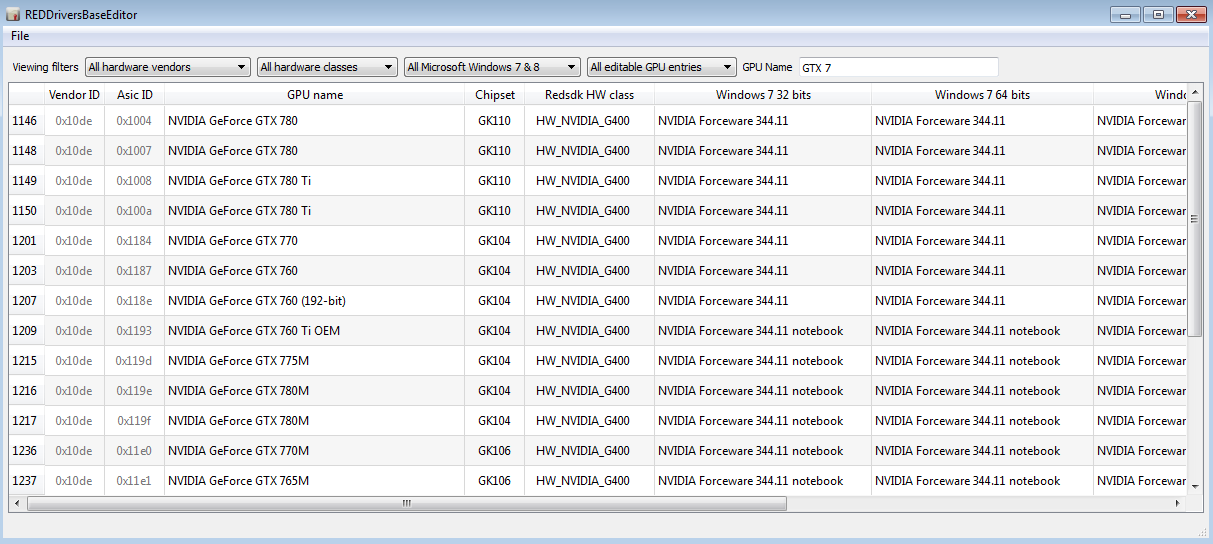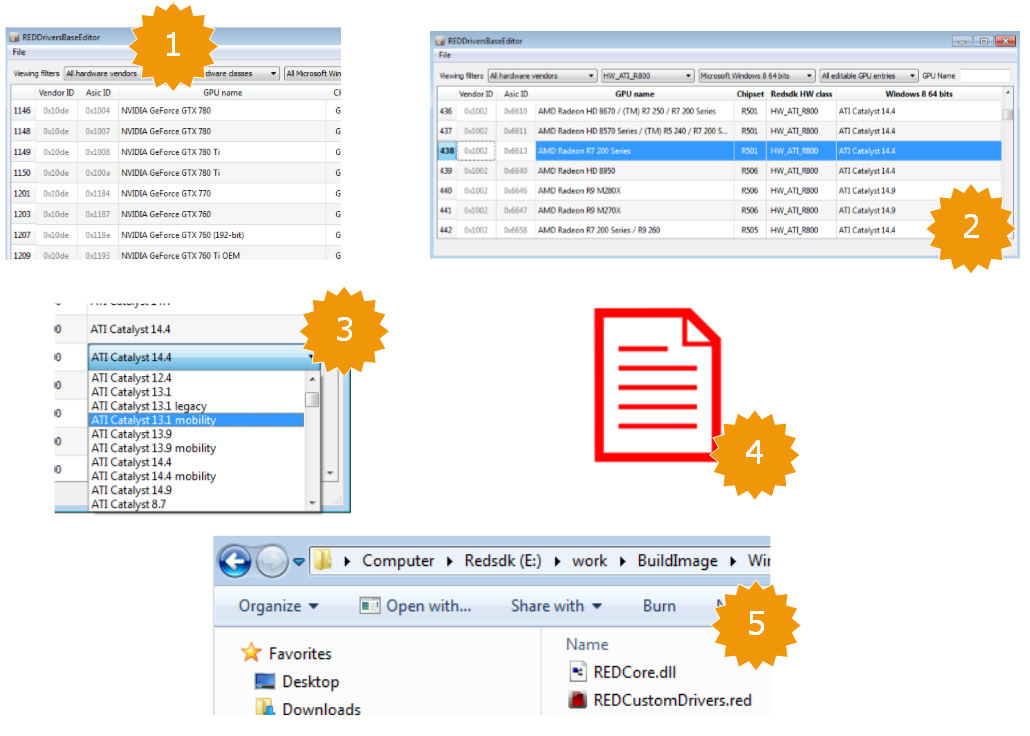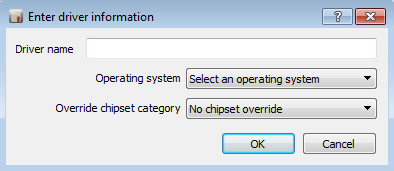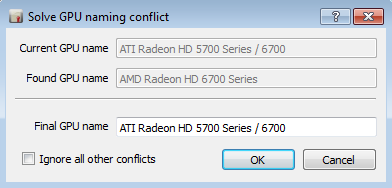REDDriversBaseEditor
The REDDriversBaseEditor is a small tool supplied with HOOPS Luminate. It lets you customize the internal HOOPS Luminate driver database.

The REDDriversBaseEditor program
The REDDriversBaseEditor lets you:
- Review the database of drivers in a more friendly manner than the full page
- Change the recommendation for a given graphic card and for a given operating system
- Import new driver revisions and new GPU to have them recognized by HOOPS Luminate and see HOOPS Luminate recommend driver revisions for them
Some applications, for one reason or another, may prefer to stick to specified driver versions (for instance, an application that runs with other applications, that must enforce a driver version to work; or application specific driver issues solved by a given driver version). The REDDriversBaseEditor lets you change any driver recommendation so that it fits your own needs.
How to Change a Driver Recommendation?
Follow the steps detailed below to change the recommended driver for a known GPU:
- Open the REDDriversBaseEditor.
- Identify the target GPU and operating system.
- Double click on the table cell; change the driver version.
- Save the .red file onto disk (the file is saved as REDCustomDrivers.red).
- Copy the REDCustomDrivers.red file to the binary folder of your application.
- Restart your application. The driver recommendation has changed.

Using the REDDriversBaseEditor to override a driver recommendation
The User Interface
The drivers base editor interface is very simple: There are several display filters that can be used to reduce the visualized list of database entries:
- a hardware vendor filter: select the vendorID to display
- a hardware class filter: select the chipset category to display
- an operating system filter: select one OS or pre-defined OS combinations to display
- a modified GPU entries filter: this filter lets you only display database rows that have been modified since the program has been started
- GPU name filter: useful to directly lookup a GPU or a GPU family by its name

The drivers base editor filter toolbar
On editing a name field or on selecting a driver or chipset using a combo box, any modified field value will appear with a text colored in red. If the value entered in the cell is reverted back to the original stored name, the cell’s text color will go back to black.
Some fields are using combo boxes with a pre-defined list of choices for the edition of their values:
- The ‘HOOPS Luminate HW class’: all GPUs must belong to a HOOPS Luminate known hardware category so that the engine renders the right data for them.
- Driver names: any driver name string that has been imported first (through a .INF) can be used. The list of driver names that is proposed is based on the actual list of entries found in all driver recommendations plus all names imported through .INF installation files.

Edited cells are displayed in red.
In the File menu, choose ‘Load drivers base’ and select a .red file to load with custom drivers. All modified database entries can be selected easily using the ‘Only modified GPU entries’ filter.
Importing New Drivers and GPUs
In the File menu, choose “Import new chipsets from .INF”, and go to a driver’s directory to select all the .INF file that correspond to it. Then, enter the requested driver informations:
- The name of the driver as it’ll be stored in the driver database
- The operating system for which this driver is to be imported (repeat the import operation to target several operating systems)
- A chipset override information. If a value is selected in this combo box, then all GPU entries of that chipset category that are found to work with the driver have their driver recommendation automatically overwritten

.INF information panel from an external driver
Then, all selected .INF files are parsed and all GPU entries found are extracted from the files. It arises that several GPU names share the same asic ID, which corresponds to a single entry in the driver database. In this case, the drivers base editor pops up a panel to solve the name conflict:

The naming conflict panel
Click ‘Ignore all other conflicts’ once all names conflicts have been resolved for a given OS once if you import the same driver for another operating system or to override another chipset category. The tool will keep all name conflicts solved.

